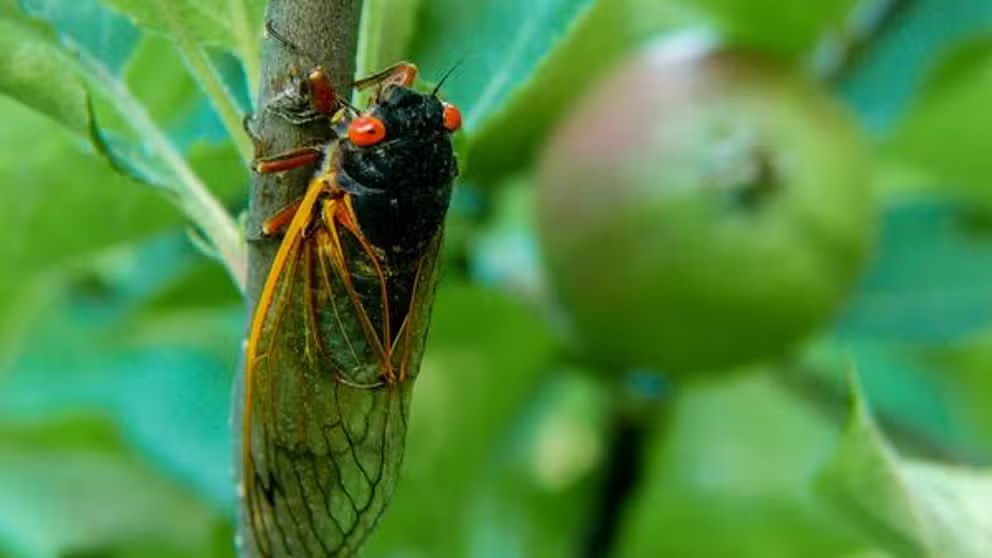Which cicadas are invading the US this summer, annual or periodical, and what's the difference?
Despite their differences, it’s all about mating for the "loud and lusty" insects
Annual vs. Periodical Cicadas
Annual vs. Periodical Cicadas: The differences between these two bugs.
Big bugs that make a lot of noise — that’s an apt description of cicadas. These noisy insects can be divided into two groups: annual and periodical, and one group is invading the U.S. this year in numbers not seen since 1803.
There’s an obvious difference between these two varieties of cicadas, but there’s also an overarching similarity — finding a mate.
2024 IS THE YEAR OF THE DOUBLE CICADA EMERGENCE: A ‘SIMULTANEOUS EXPLOSION OF BUGS’
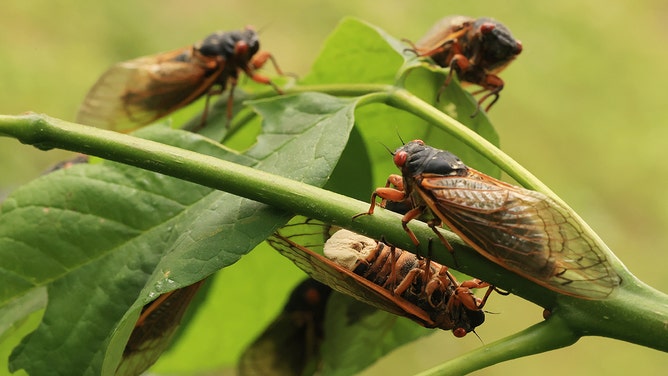
File: Showing a plug of yellow spores where its abdomen used to be, a Magicicada periodical cicada infected with a fungal parasite mimics female mating behavior in an attempt to get close a non-infected cicadas at Fairland Recreational Park June 01, 2021 in Burtonsville, Maryland.
(Chip Somodevilla / Getty Images)
What is the life cycle of a cicada?
As the name would suggest, annual cicadas emerge more often than periodical cicadas.
According to entomologist Howard Russell, of Michigan State University, periodical cicadas have either a 13-year or a 17-year life cycle, while annual cicadas have a 3- or 4-year life cycle.
While the two varieties are different species, their life cycles are similar. Both start underground as nymphs feeding on the roots of trees until soil temperatures warm enough for the baby bugs to dig a tunnel to the surface and prepare for adulthood.
CICADAS: IF YOU CAN'T BEAT THEM, EAT THEM
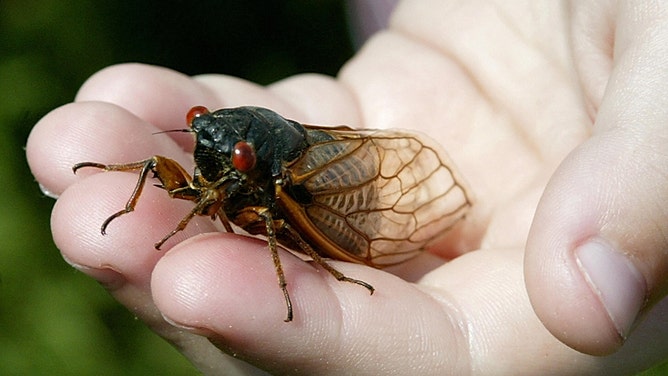
File: A child holds up a cicada in Alexandria, Virginia 14 May 2004.
(STEPHEN JAFFE/AFP / Getty Images)
"The nymph then splits down the middle and out comes the adult cicadas," Russell said.
They’ll start flying after a few days of letting their exoskeleton harden, Russell said.
For periodical cicadas, they have about a month to reproduce and lay their eggs before they die. Annual cicadas are around for most of the summer.
Once the eggs hatch, the nymphs fall to the ground, burrow to the tree roots and the cycle starts again.
TRILLIONS OF CICADAS WILL SOON EMERGE
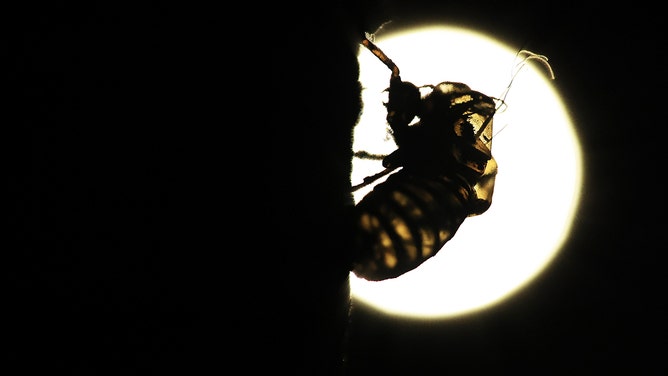
File: The empty shell of a periodical cicada nymph clings to a tree after the adult insect molted on May 10, 2021 in Takoma Park, Maryland.
(Chip Somodevilla / Getty Images)
When do cicadas emerge?
Russell said that periodical cicadas typically emerge in May, while annual cicadas emerge near July.
"They’re around for the rest of the summer," Russell said. "Once they emerge out, then you’ll hear cicadas during the day pretty much all summer long, whereas the periodical cicadas are pretty much done by the end of June."
The timeframe of emergence for annual cicadas has earned them the nickname "dog-day cicadas," referring to the dog days of summer.
EMERGING CICADAS' CACOPHONY TRIGGERS CALLS TO POLICE IN SOUTH CAROLINA FROM CONFUSED RESIDENTS
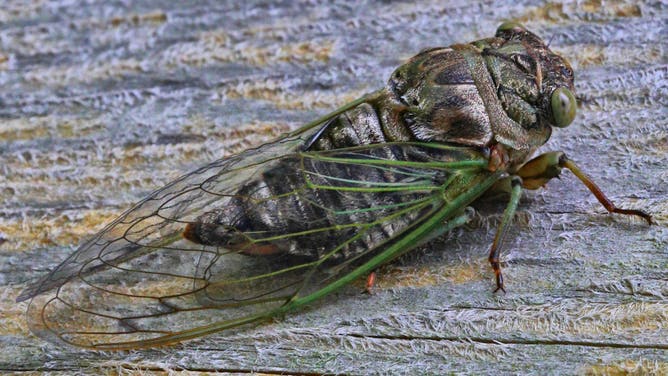
File: A dog-day or annual cicada.
(Creative Touch Imaging Ltd./NurPhoto / Getty Images)
What do cicadas look like?
Periodical cicadas are a little bigger than annual cicadas and are dark in color, Russell said. They have bright red eyes and orange coloring on their legs and wing veins.
According to Russell, annual cicadas are a grayish-green color and do not have the bright red eyes and orange coloring of a periodical cicada.
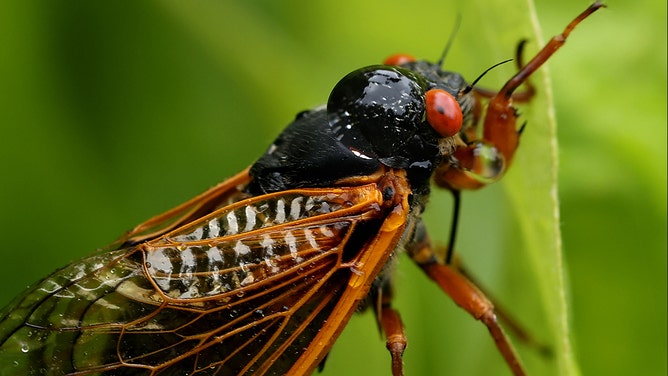
File: A drop of water lands on the back of a periodical cicada, a member of Brood X, on June 03, 2021 in Columbia, Maryland.
(Chip Somodevilla / Getty Images)
Mating
Russell said the periodical and annual cicadas are different species and will not mate with each other. However, their goals are the same whenever they emerge.
"They’re in it for themselves," Russell said. "The purpose of cicadas is to produce more cicadas."
Russell said that the male cicadas of either variety form choruses and vibrate a membrane on their abdomens to make the loud buzzing that is the signature sound of the insects.
"They sing their little hearts out ... hoping to attract a female," Russell said. "They’re loud. They’re lusty."
